#åsatro
Text



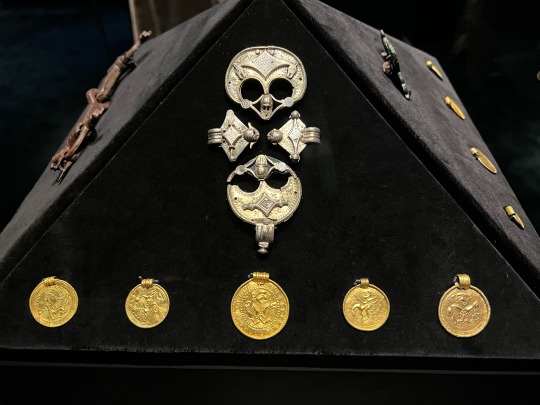
Kulturhistorisk museum in Oslo hosted an exhibit named “Fabulous Animals”, exploring the connection between humans and animals in the period from the Iron Age to the Viking Age, through archaeological finds.



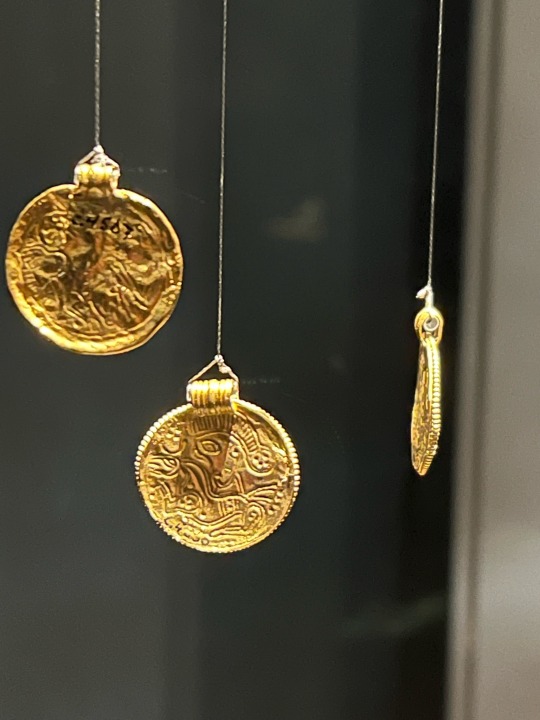


I hope you will enjoy some photographs of some of the exhibits.
Til års og fred
#asatru#norse mythology#heathen#pagan#norse heathen#forn sed#vikings#viking#norse pagan#forn sidr#nordisk sed#norse#åsatro#forn siðr#hedendom#odin#ásatrú#norse gods
208 notes
·
View notes
Note
Wait. You said you're not with asatru. Isn't åsatro just the word for believing in and following the Norse gods? At least that's how I've heard the word used here in Norway. Is asatru a specific group of people?
Nope it’s the name of a specific religion.
Sadly, here in the states people have taken the name y’all came up with and used it to try to make their racist facist groups look better by trying to hint that they’re allied with the Norwegian and Icelandic groups, so you’ve gotta be really careful about the term Asatru in the USA.
151 notes
·
View notes
Photo
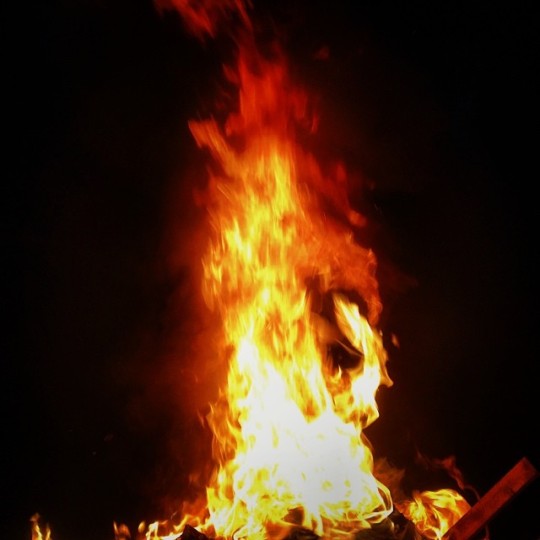
Blotsbål og brennvin og offring av geit og lensmann #viking #åsatro (ved Dollaråsen)
0 notes
Quote
When my time comes, tell ravens to hack my flesh to pieces and carry my rotting remains through the western winds.
Åsatru statement of death.
#åsatru#åsatro#norse mythology#norse#mythology#death#death quote#raven#flesh#pieces#carry#rotten#the western winds#western winds#dead#life#old#old mythologies#old belief
7 notes
·
View notes
Text
“Heathenism is, that men worship idols; that is, that they worship heathen gods, and the sun or the moon, fire or rivers, water-wells or stones, or forest trees of any kind; or love witchcraft, or promote ‘morth’-work in any wise; or by ‘blot,’ or by ‘fyrht;’ or perform any thing pertaining to such illusions.”
This excerpt from The Law Codes Of King Cnut, written by Archbishop Wulfstan (on behalf of King Cnut) in approximately 1020, serves as a fantastic outline for exactly what constituted “heathen” practices, from the time at which they were trying to ban such practices.
Thorpe Translation, Winchester Laws Volume 1, p.162
#asatru#heathen#pagan#norse heathen#forn sed#viking#norse pagan#forn sidr#nordisk sed#norse paganism#norse heathenry#norse practices#norsereligion#ásatrú#åsatro
227 notes
·
View notes
Text

Whispers Of Yggdrasil
Robin Hoods Bay, England (5/2/21)
#asatru#forn sed#forn sidr#nordisk sed#åsatro#forn siðr#ásatrú#yggdrasil#norse myth#norse#norse paganism#norse mythology#mine#my picture#photography#unedited#hedendom#heathen#pagan#norse heathen#whitby#robin hoods bay#yorkshire
354 notes
·
View notes
Text
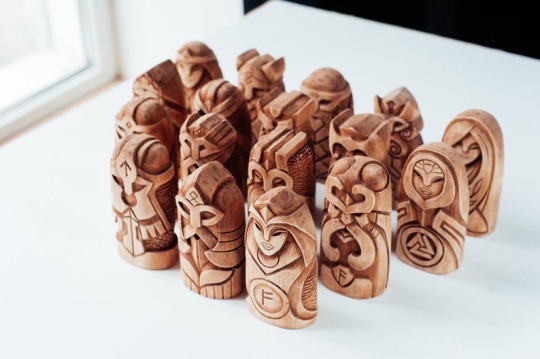
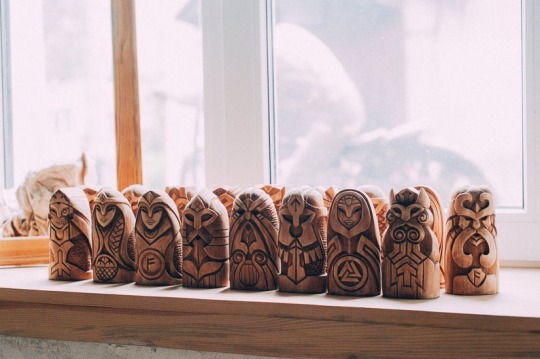




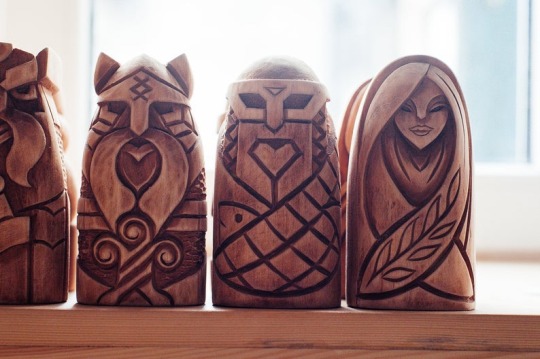
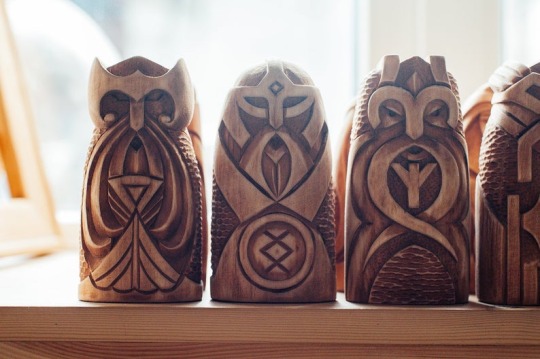
Gorgeous wooden Norse god figurines carved from linwood with runic inscriptions by Triumpho
#norse mythology#norse gods#asatru#ásatrú#åsatro#Runes#viking crafts#vikings#odin#thor#freyja#frigg#magni#tyr#heimdall#hel#loki#bragi#Idunn#Freyr#baldur#bor#Njordr#aegir#eir
6K notes
·
View notes
Photo


St. Olav - An Echo Of Thor?
A red bearded warrior, hunting trolls with his axe on his travels does not require us to make a huge leap of imagination in order to note similarities with the norse god Thor. However, there is far more to the comparison that St. Olav may have been used to reimagine pre-Christian beliefs surrounding Thor if we look a little deeper...
Following Christianisation in Northern Europe, many Scandinavians kept their heathen beliefs alive through syncretism with Christianity. A strong case can be made for this practice being evident with the Catholic saint and former king of Norway, Olav Haraldsson, celebrated each year on 29th July.
In Scandinavia, from long ago through until more recent times, St. Olav’s day was the day when the people would pray for thunder (named directly from Thor) and (as they referred to it) “the rain of the Æser” to prepare the crop for harvest, which they so eagerly awaited to come to fruition at this time of year.
St. Olav, like Thor, could control trolls and giants, according to legend. When he travelled around Norway on his Christening mission, the trolls often tried to block the way for him. He then used his power to turn them to stone, as if he was the sun, using a cross instead of Thor’s hammer, mjølner
One story, from the area of Ringerike, tells us that when St. Olav tried to pass a place called Krokkleiva, an angry giantess jumped out of the mountainside and said:
“Saint Olaf with the red beard, you are riding too close to my cellar wall!”
But St. Olaf replied:
“Stand you there in wood and stone until I return!”
Whereupon the giantess was turned into stone.
Similar stories are told about various landscape features throughout Norway. People also saw other traces of St. Olaf in the landscape, such as footprints of his horse. A stone in Setesdal is said to be his chair, two rocks near Stiklestad are his bowl and cup, etc...
Another famous landmark is The Well Of St. Olav at Karmøy:
“The legend claims that King Olaf was followed by enemies through the strait Karmsund. He sailed his ship to the western side of the island. From here the King and his men started to drag the ship over land from Torvastad to Vikingstad.The hard work made them thirsty and the King stabbed his clenched fist in the rock. Immediately it came roaring up clear water so everyone could drink.”
Most interesting about St. Olav’s Well is that it is located in Torvastad and just a few hundred meters to the west we find Hovland. As the name suggests, it was likely to have been a pagan hov (temple). We know that water played a major role in Norse mythology, and perhaps the water in St. Olav’s well also had a sacred function in Pre-Christian times.
In Viking times, before the conversion to Christianity (and after it, too), people in Norway believed in different supernatural beings living in the landscape. Landscape features could also be made by them, such as mountains being petrified trolls, or a ravine being the axe blow of a giant. With these stories about St. Olav, this way of thinking and explaining the landscape takes on a Christian mask, yet it is still fundamentally a continuation of traditional beliefs.
#Forn Sed#Forn Sidr#Forn Siðr#Nordisk Sed#Folketro#folklore#folk tales#scandinavian folklore#scandinavian folk belief#syncretism#st olav#olav haraldsson#asatru#ásatrú#åsatro#thor#tor#norse gods#norse heathenry
360 notes
·
View notes
Text


Hil Njord!
Hil Æge!
Hil Rån!
Hil ni døtre av hav!
Pictures are my own (see if you can match my stone pile)
#asatru#norse mythology#norse heathen#forn sed#norse pagan#folketro#forn sidr#nordisk sed#norse#ásatrú#åsatro#norse heathenry#heathenry#heathenism#norse heathenism#njord#njordr#ægir#æge#aegir#rán#rån#ni døtre av hav#nine wave daughters#vanir#vaner#venerate
232 notes
·
View notes
Text
Sommersolverv
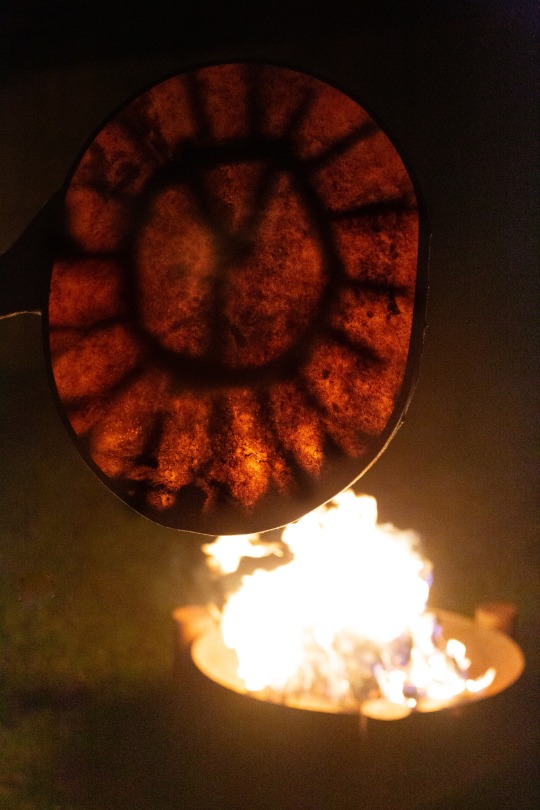




The longest day, the shortest night,
Natt is in absence,
The shortest darkness, the longest light,
Dag rules this sky,
Sol enlightens a world more bright,
Just as the embers of the midsommar fire,
Until the sun rises, they must stay alight,
Make haste, the days move quickly now,
Jord grows stronger now,
And Balder’s brightness shining through,
As Hod stirs from his deepest sleep,
Anticipating the falling leaves,
For one more year, give thanks,
Sol ascends tonight.
Images and poem by @hedendom
#asatru#norse mythology#norse heathen#forn sed#viking#norse pagan#folketro#forn sidr#nordisk sed#norse#åsatro#ásatrú#norse gods#norse paganism#norse myth#norse folklore#nordic folk belief#scandinavian folk belief#heathen#pagan#hedendom
331 notes
·
View notes
Photo


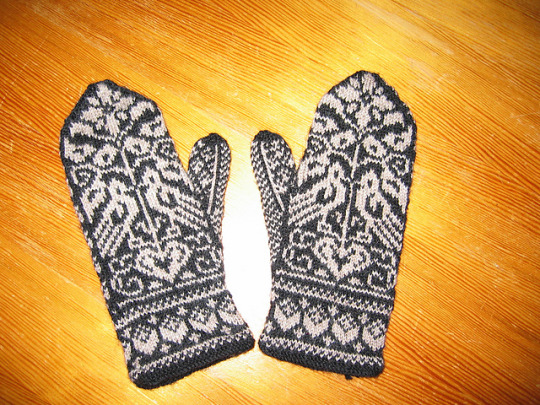

Vinternettene - Winternights
October 14th
It is customary that every year at sundown on 14th October, heathens will celebrate vinternettene (winternights), also known as høstblot (autumn blot), vinterdag (winter day) or vinternatt (winter night).
14th October was the day that Scandinavians would turn over their primstav to mark the beginning of the winter half of the year and welcome the cold weather returning, a tradition that pre-dates Christianity in Scandinavia. Marked with the symbol of a mitten (as it was customary to knit new mittens for the coming cold weather), it is also said that the weather on vinternettene will be a signal of the weather for the coming winter.
The sacrificial blot accompanying this was usually dedicated to Frøy (Freyr), alver (elves) and the diser (disir). Asking that Frøy will return swiftly to sow the seeds of rebirth and that we make it safely through the coming cold and snow.
Til års og fred!
#winternights#winter nights#vinternettene#vinternatt#vinterdag#heathen holiday#blot#haustblot#høstblot#primstav#hedensk högtider#asatru#ásatrú#åsatro#Forn Sed#Forn Sidr#Forn Siðr#Folketro#Nordisk Sed#nordisk hedendom#Hedendom#norse heathen altar#norse heathen#norse heathenry#norse paganism#horgr#horg#heathen horg
591 notes
·
View notes
Text


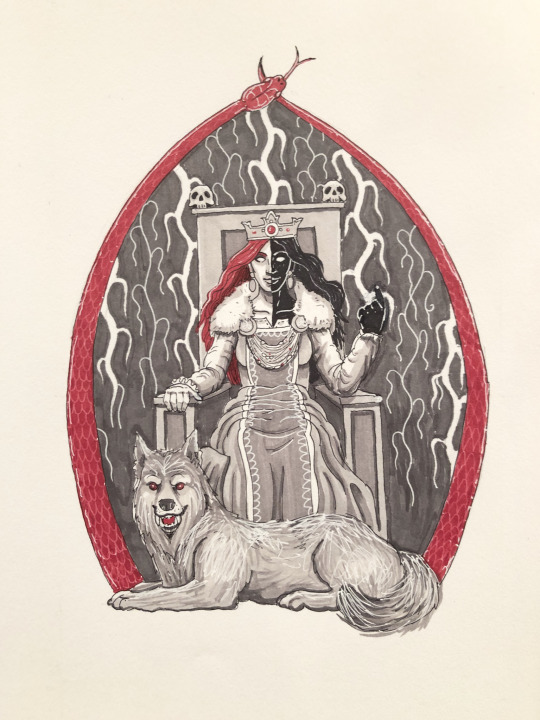
Odin, Freyja and Hel drawn as part of a mythology themed inktober by Arkham 13
#odin#freyja#frøya#oðinn#hel#asatru#norse mythology#heathen#pagan#norse heathen#forn sed#norse pagan#ásatrú#åsatro#norse myth#forn sidr#forn siðr
532 notes
·
View notes
Photo


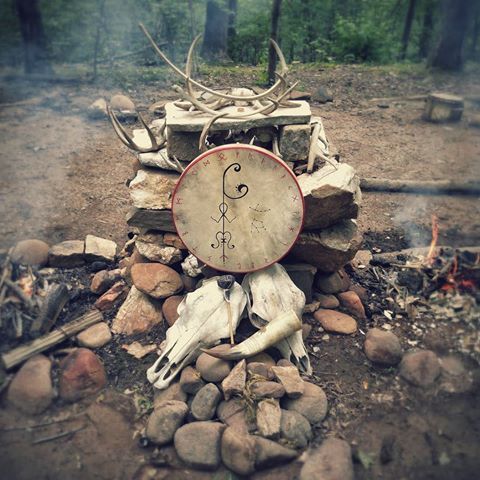
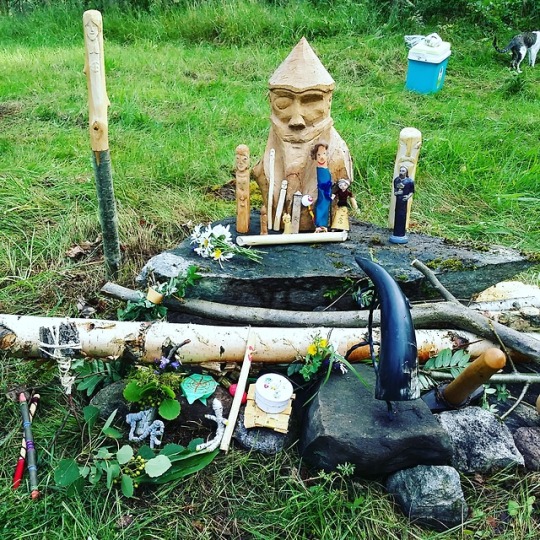
Horg
“þeir er hǫrg ok hof hátimbroðo”
“Shrines and temples they timbered high”
- Völuspá
A horg (Old Norse “hǫrgr”) is a sacrificial site or a form of altar in pre-Christian times in the Nordic countries and which roughly refers to a "stone pile".
In the poem Hyndluljóð, the goddess Frøya (Freyja) speaks favorably of Ottar (Óttar) for having worshiped her so faithfully by using a horg. Frøya details that the horg is constructed of a heap of stones and that Ottar often reddened these stones with sacrificial blood in dedication to her. Snorre Sturlason states that the horg is used in the veneration of the Åsynjene (female gods).
In the poem Vafþrúðnismál, it is also stated that many a horg and hov were dedicated to Njord (Njörðr).
A horg is considered different to a hov (from the Old Norse hof), commonly called a “temple”. A rough simplification is that horg were for outdoor rituals and hov for indoors worship.
Many modern day heathens within Scandinavia continue to use a stone set as a focal point for rituals conducted outdoors to this day.
#horg#horgr#hov#hof#asatru#ásatrú#åsatro#Forn Sed#Forn Sidr#Forn Siðr#Nordisk Sed#norse heathenry#norse paganism#frøya#freyja#odin#njord#njörðr#temple#shrine#norse heathen altar#Pagan Altar
3K notes
·
View notes
Photo

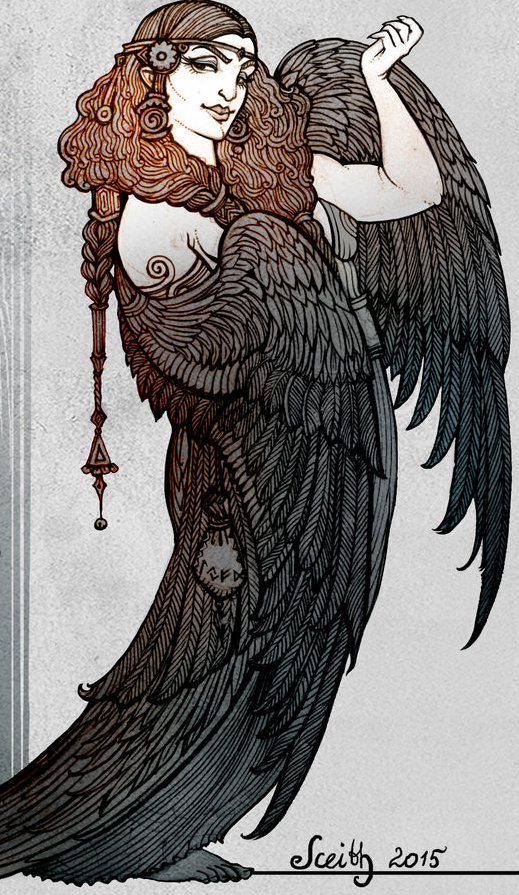
Fjaðrhamr
In Norse Mythology (and indeed also modern folk belief), the way in which humanoids can posses wings, fly or literally transform to a bird is to undergo a feathered transformation known as Fjærham/Fjederham (in modern Scandinavian tongue) or Fjaðrhamr (in Old Norse).
Fjær/fjeder/fjaðr means “feather” and ham/hamr means the form or shape. So it literally translates as “feather-form”.
The most prominent examples of “feather-form” are Freya’s feather cloak, which is used by Loki in Þrymskviða, the Norns who are said to transform into swans to travel midgard and the hero, Germand Gladensvend, from the Danish folk ballad of the same name.
Art: Sceith-A
#loki#Loki Laufeyson#loke#Freya#freyja#frøya#asatru#ásatrú#åsatro#scandinavian folk tales#scandinavian folklore#Folketro#feather cloak#norse mythology#norse gods#shapeshifter#shapeshifting#Hamrammr#Magic#folk magic#scandinavian folk magic#nordic folk magic#hamramm
2K notes
·
View notes
Photo






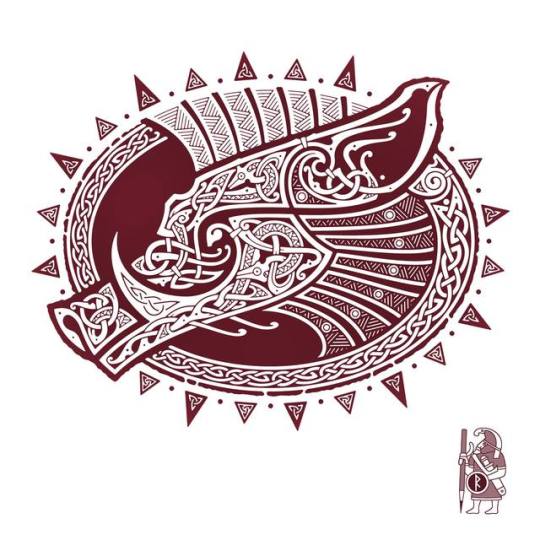
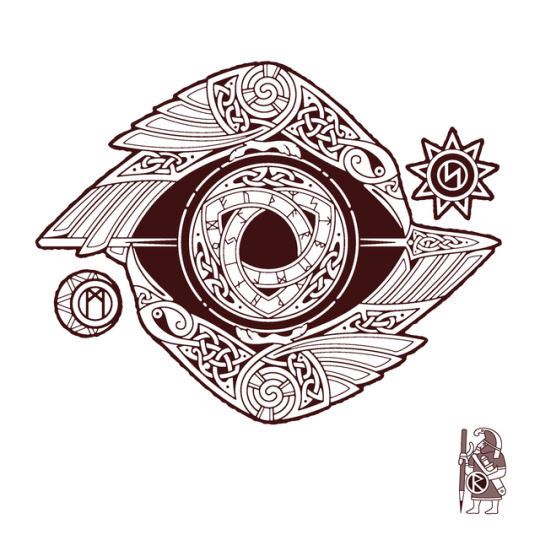
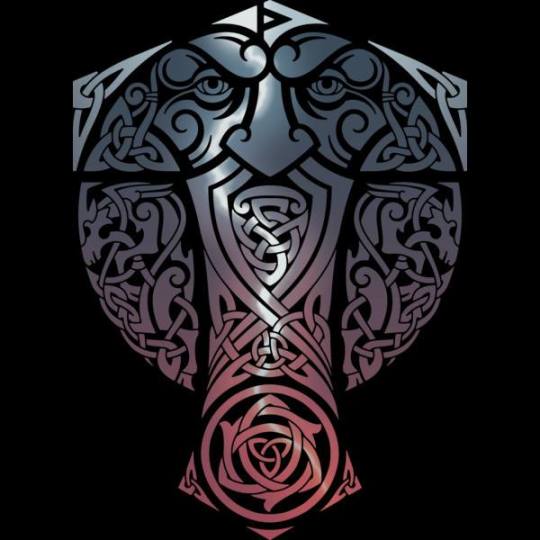
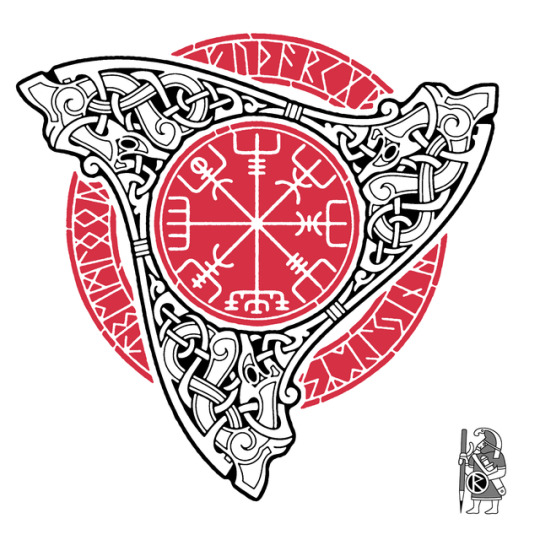
Norse Mythology and Norse Heathen themes are found throughout theses intricate designs by Raidho.
#norse myth#norse#norse mythology#norse gods#norse heathenry#norse paganism#Hedendom#nordisk hedendom#Forn Sed#Forn Sidr#Forn Siðr#asatru#ásatrú#åsatro#thor#Thor's hammer#mjolnir#gungnir#raven#Huginn and Muninn#Gullinbursti#vegvisir#freyja#frøya#ratatosk#hel#Ragnar Lodbrok#Ragnar Lothbrok#ragnar#vikings
2K notes
·
View notes
Photo

Vintersolverv
The shortest day, the longest night,
Sol is in absence,
The longest moon, the shortest light,
Måne rules this sky,
Darkness envelops a world less bright,
Just as the embers of the midwinter fire,
Until the sun rises, they must stay alight,
The knowledge that days grow longer now,
Hope grows stronger now,
And warmth supports survival,
As Frøy returns on his golden steed,
To sow the seed of life,
For one more year, give thanks,
Sol is reborn.
Poem: @hedendom
Artwork: Johan Egerkrans
#vintersolverv#winter solstice#Frøy#freyr#frey#yule#yuletide#heathen yule#jul#norse mythology#norse myth#Hedendom#nordisk hedendom#Forn Sed#Forn Sidr#Forn Siðr#asatru#ásatrú#åsatro#heathen christmas#måne#sol#solstice#viking#vikings#Nordisk Sed
895 notes
·
View notes